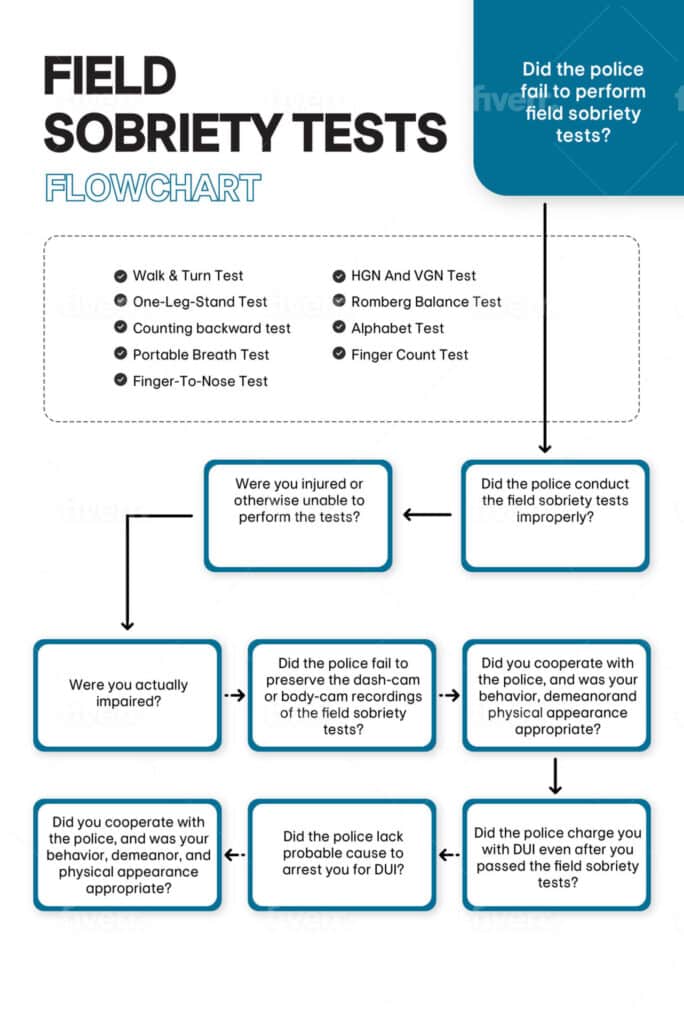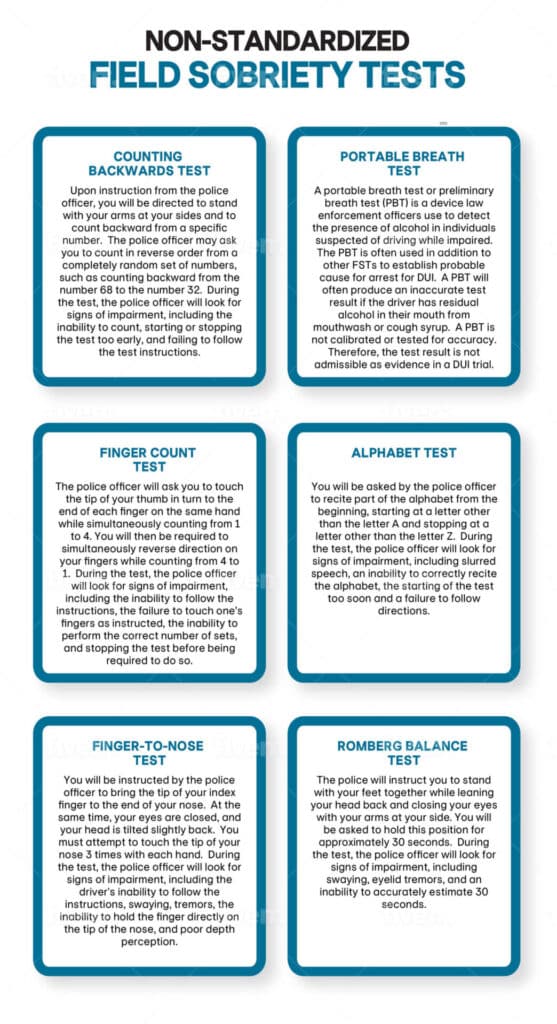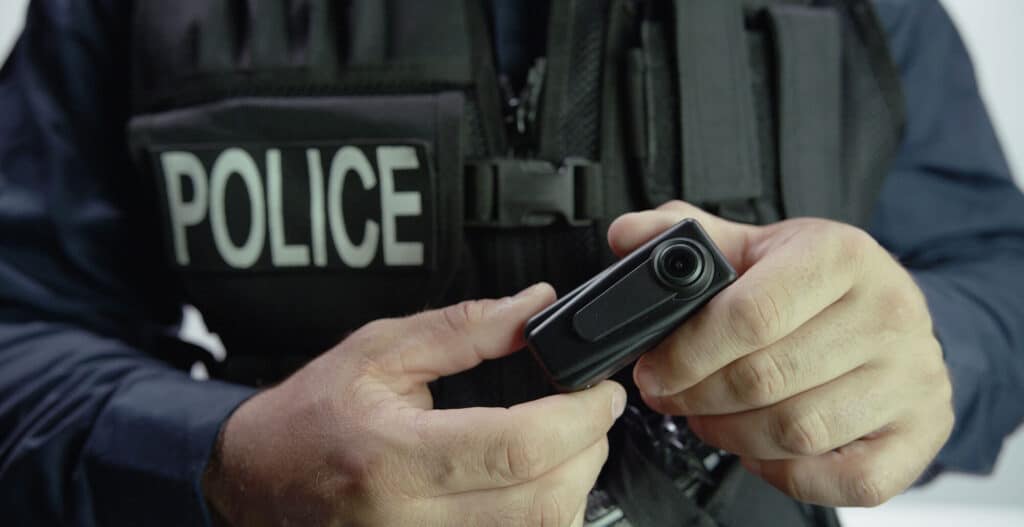In Pennsylvania, if the police stop you for suspicion of driving under the influence of alcohol or a controlled substance (DUI), they may ask you to submit to several field sobriety tests (FSTs). Police officers will administer the FSTs to detect signs of driver impairment and to establish probable cause to make an arrest for DUI. Unfortunately, FSTs are not scientifically reliable indicators of driver impairment. Therefore, it is critical to contact a DUI field sobriety test lawyer to try to get the court to dismiss your DUI.
Challenging DUI Field Sobriety Test Evidence
Prosecutors rely heavily on the results of FSTs to prove that an individual is guilty of DUI. It is challenging for a prosecutor to achieve a conviction before a judge or jury in a DUI trial if the FST results are exposed as unreliable. I have often successfully challenged the competency and accuracy of FSTs used in DUI prosecutions.
I have over a decade of experience providing skilled and aggressive representation to individuals facing charges for driving under the influence of alcohol or controlled substances in Bucks County, Montgomery County, and the nearby Pennsylvania Counties.
Contact me at (215) 752-5282 for a free initial consultation, or fill out the confidential contact form for an immediate response. Appointments are available after business hours and on weekends.
NHTSA Standardized Field Sobriety Tests
The results of field sobriety tests are incredibly undependable. Also, the tests are based almost entirely on the subjective opinions of the arresting officer. Roadside FSTs are often difficult to pass, even for sober people.
The National Highway Traffic Safety Administration (NHTSA) has approved 3 standardized FSTs for determining alcohol-related driver impairment.
The Walk and Turn Test
The walk-and-turn test is considered a divided attention task requiring you to focus on the police officer’s instructions while completing a physical task. This test requires 9 steps on an imaginary line in a heel-to-toe formation.
Therefore, you must then pivot and walk the 9 steps on the same imaginary line in the opposite direction. The walk-and-turn test is divided into an instruction stage and a performance stage.
Walk and Turn Performance Clues
While conducting the test, the police officer will look for signs of impairment, including:
- The driver cannot keep balance during the instruction stage; or
- The driver starts the test too soon; or
- The driver stops while walking; or
- The driver is unable to maintain heel-to-toe while walking; or
- The driver steps off the line; or
- The driver uses their arms for balance; or
- The driver makes an improper turn while walking; or
- The driver takes the incorrect number of steps
Walk and Turn Test Scoring Standards
The police officer conducting the walk-and-turn test will record 1 point for each performance clue observed for no more than 8 points. According to the NHTSA, drivers who exhibit 2 or more of the performance clues during the walk and turn test are presumed to have a blood alcohol content (BAC) of 0.08% or greater.
The Horizontal Gaze Nystagmus Test
The Horizontal Gaze Nystagmus (HGN) test is used to detect the involuntary, rapid, and repetitive movement of the eyes. During the HGN test, you must keep your head still while following a pen, penlight, or another stimulus with your eyes as the police officer moves the object from side to side. The HGN test is divided into an instruction phase and a performance phase.
Horizontal Gaze Nystagmus Performance Clues
While conducting the HGN test, the police officer will look for 3 indicators of impairment in each eye, including:
- Lack of smooth pursuit (eyes track equally, but the movement is “jerky”); or
- Distinct and sustained nystagmus at maximum deviation (the “bouncing” or “jerking” of the eyes when the iris is taken to the far corner of the eye; or
- The onset of nystagmus before 45 degrees (jerking of the eye as it follows an object prior to reaching a 45-degree angle)
According to the NHTSA, the entire HGN test should include a minimum of 14 passes and take 76 seconds to complete.
HGN Test Scoring Standards
The police officer conducting the HGN test records 1 point for each performance clue indicated in each eye for no more than 6 points. Therefore, if 4 or more performance clues are observed between the 2 eyes, the driver’s BAC is likely 0.08% or above.
The One-Leg Stand Test
Like the walk-and-turn test, the one-leg stand test is considered a divided attention task requiring you to simultaneously focus on mental and physical tasks.
During the one-leg stand test, you must hold your foot straight out approximately 6 inches off the ground, counting from 1,001 to 1030 in sequential order within 30 seconds. The one-leg stand test is divided into instruction and performance phases.
The One-Leg Stand Performance Clues
While conducting the one-leg stand test, the police officer will look for the following signs of impairment:
- The driver sways their raised leg or entire body either side-to-side or back-and-forth while balancing; or
- The driver moves their arms 6 or more inches from their body to maintain balance; or
- The driver hops during the test to maintain balance; or
- The driver puts their foot down 1 or more times within 30 seconds; or
One-Leg Stand Test Scoring Standards
The police officer conducting the one-leg stand test will record 1 point for each performance clue indicated for no more than 4 points. The driver is likely to have a BAC of 0.08% or above if 2 or more performance clues are observed by the police officer during testing.
The one-leg stand test is also scored as a failure if the driver puts their foot down 3 or more times during the 30-second counting sequence.
Alternate Field Sobriety Tests
Many FSTs that the police use during a DUI investigation are considered “non-standardized.” Non-standardized FSTs are deemed even less reliable in measuring driver impairment and intoxication when compared to standardized FSTs.
In addition, non-standardized FSTs are often used by the police when a driver has a medical condition or physical disability that would prevent them from completing the standardized FSTs.
Unreliability of Non-Standardized Field Sobriety Tests
No reputable scientific studies or research establish the reliability of non-standardized FSTs in measuring driver impairment or intoxication. Additionally, non-standardized field sobriety tests are not subject to national standards for administration.
As a result, each police officer can choose to conduct the test according to their preferences instead of using a standardized and consistent procedure. Common non-standardized FSTs used by the police include:
Challenging the Field Sobriety Test Evidence
The test results for NHTSA-standardized FSTs and non-standardized FSTs are unreliable because they are mainly based on the subjective opinions and conclusions of the police officer conducting the tests. I know the proper procedures for conducting standardized and non-standardized FSTs.
I will thoroughly investigate the facts and circumstances of each FST administered in your case. Field sobriety test evidence can be successfully challenged in court in many ways.
Dash-Cam and Body-Cam Evidence of Field Sobriety Tests
If necessary, I will use an independent defense investigator to subpoena any existing dashboard camera (dash-cam) and body camera (body-cam) video and audio recordings from the vehicle stop.
In some cases, dash-cam and body-cam evidence can be presented for the defense at trial to demonstrate that adverse weather conditions, poor lighting, or uneven road conditions affected the reliability of the FST results.
Dash-cam and body-cam evidence can also be used by the defense to establish that accused performed better on the FSTs compared to the conclusions and observations documented by the police officer in the police reports.
Dash-cam and body-cam evidence can often be used at trial to prove that the police officer conducting the FSTs did not have the proper training to perform the tests or did not administer the tests according to the NHTSA standards.
Medical Conditions That Affect Field Sobriety Test Results
Field sobriety testing should not be conducted on individuals over the age of 65 or on people more than 50 pounds overweight. In addition, many different medical conditions can affect the reliability of FSTs, including:
- Diabetic nerve damage
- Inner ear conditions (e.g., vertigo, Meniere’s disease)
- Foot conditions
- Neurological disorders (e.g., neuropathy, Parkinson’s disease, MS)
- Eye diseases (e.g., cataracts, macular degeneration, glaucoma)
- Low blood pressure (e.g., dehydration, diabetes, heart conditions)
- Vestibular migraine headache
- Medications (e.g., beta-blockers, antidepressants, narcotics)
- Ankle, foot, knee or, hip arthritis
I will extensively review your medical history to determine if any medical conditions may have interfered with your ability to successfully complete the FSTs conducted by the police.
Start with a Strong Defense
Suppose you have been charged with driving under the influence of alcohol or drugs in Bucks County, Montgomery County, or the surrounding counties. In that case, you must act quickly to protect your rights and build the most vigorous possible defense against the charges. Phone lines are open 24 hours daily at (215) 752-5282. Call today for a free initial consultation, or fill out the confidential contact form for an immediate response.







